Key Takeaways
1. Mathematics Illuminates the Dubious Nature of Biography
Whether because of my natural temperament, my training as a mathematician, or a late midlife reckoning, I look on the whole biographical endeavor, my own included, as a dubious one.
Skepticism towards biography. The author approaches biography, including his own, with skepticism, questioning the accuracy, balance, and representativeness of life stories. He challenges the notion that biographies can reveal definitive truths about a person's actions or beliefs, emphasizing the limitations of memory and the biases of perspective.
Memories are unreliable. Memories are often inaccurate or fabricated, perspectives are biased, and assumptions are unfounded, making the biographical endeavor inherently dubious. The very notion of a stable, consistent "self" is also suspect, further complicating the task of capturing a life story accurately.
Meta-memoir approach. The author employs ideas from mathematics, analytic philosophy, and related realms to explore the concerns and questions that arise when reading biographies and memoirs. This meta-memoir approach aims to impart a modicum of mathematical understanding and biographical numeracy, encouraging readers to critically examine life stories, including their own.
2. Statistics Expose the Biases Inherent in Life Stories
Picking only eyewitnesses to events in a subject's life certainly doesn't guarantee truth either.
Biases in biographical accounts. Biographies are often shaped by the biases of the biographer, who may resonate with the subject and selectively interview people who support their perspective. This can lead to skewed narratives that fail to capture the full complexity of a person's life.
Statistical fallacies. Elementary statistical understandings, such as the unreliability of small samples and the non-representativeness of self-selected samples, are often ignored in biographical accounts. This can lead to misleading conclusions about a person's character or the significance of certain events.
Type I and Type II errors. Biographers, like storytellers, tend to suspend disbelief to enhance enjoyment, risking Type I errors (false positives). Statisticians, on the other hand, suspend belief to avoid being fooled, risking Type II errors (false negatives). This difference in approach affects the types of conclusions drawn in biographies versus scientific analyses.
3. Individuality Thrives in the Multidimensional Space of Human Traits
There are two kinds of people in the world—those who are very strange and those whom you don't know well.
Beyond normal appearances. People often appear normal on the surface, but closer acquaintance reveals their unique and sometimes bizarre traits. This observation suggests that "normal" is a superficial assessment, and true individuality lies in the statistical outliers of human characteristics.
Multidimensionality of human traits. People can be measured along numerous dimensions, including personality, obsessions, fears, hobbies, and consumer preferences. The multiplication principle in combinatorics demonstrates the vast number of possible combinations, leading to immense diversity.
Geometric understanding of strangeness. Using a geometric analogy, the author explains that as the number of dimensions increases, the "normal" part of a hypercube shrinks, while the extreme edges expand. This suggests that most people live on the extreme, abnormal edges of the human multidimensional hypercube, making strangeness the norm.
4. Nihilism Offers a Path to Serenity and Acceptance
If they do, that's great. They provide the meaning of life for us. But if they don't, then, as philosopher Thomas Nagel seems to suggest in his famous paper “The Absurd,” there's no reason to despair, since even if nothing really matters, it probably doesn't matter that nothing matters.
Embracing meaninglessness. The author explores the idea that life may be inherently meaningless, drawing on Thomas Nagel's concept of the absurd. He suggests that even if nothing truly matters, it may not matter that nothing matters, opening the door to an ironic and potentially happy approach to life.
Meta-levels of meaninglessness. The author proposes iterating the argument for meaninglessness at higher meta-levels, suggesting that it doesn't matter that it doesn't matter that nothing matters. This can lead to a serene acceptance of life's inherent absurdity.
Nominal self. The author questions the notion of an essential self, suggesting that it is a chimera or illusion. He argues that selves, like God or gods, are stories we tell ourselves to create a sense of identity and purpose.
5. Life's Trajectory: A Curve Fitted to Contingent Events
A common problem in statistics is finding the curve or surface that best fits or approximates a relatively small number of data points in space.
Life as a trajectory. The author uses the metaphor of a trajectory to describe a life's progression, suggesting that biographies are attempts to link a relatively small number of remembered events into a coherent narrative. This narrative is often an inference shaped by social norms, biases, and personal attitudes.
Curve fitting analogy. Just as statistical techniques are used to find the curve of best fit through a set of data points, biographies tend to sacrifice out-of-character events in favor of a basic outline. This can lead to a distorted or incomplete picture of a person's life.
Reevaluating life's trajectory. Emotionally significant events can drastically change the perceived trajectory of a life. This can be modeled by introducing new dimensions or criteria for evaluation, shifting the curve of best fit.
6. Chaos and Contingency Shape Our Nonlinear Lives
We're all parts of various systems—familial, professional, societal—and these systems impact on us and direct our paths as if we were pinballs whirling through the quincunx of life.
Nonlinear dynamics and the butterfly effect. The author explores the role of chaos theory and nonlinear dynamics in shaping lives, suggesting that tiny events can have unpredictable and cascading effects. This is analogous to the butterfly effect, where a small event can lead to a major outcome.
Pinball machine analogy. The author compares life to a pinball machine, where tiny differences in initial conditions can lead to radically different trajectories. This highlights the contingency of people's paths and actions.
Unintended consequences. The author reflects on his own role in the 2000 US presidential election, illustrating how a seemingly minor event (his op-ed) can have significant and unintended consequences. This underscores the delicate dependence of life on initial conditions.
7. The Illusion of Self: A Story We Tell Ourselves
This self-referential emergent loop that is the “I” symbol is strange indeed and abstract.
The neuronal self. The author presents a model of the self as a neuronal construct, drawing on Douglas Hofstadter's concept of a "strange loop." In this model, the self is an emergent symbol arising from the interactions of countless neurons.
Gödelian constraints. The author suggests that human lives and life stories are subject to Gödelian constraints, drawing a parallel between the limitations of formal mathematical systems and the inherent incompleteness of self-knowledge. This self-reference and crisscrossing of levels is why we're all, as Hofstadter puts it, “hallucinations hallucinated by hallucinations.”
Experience machines. The author considers Robert Nozick's experience machine, questioning whether we would prefer machine-induced experiences to those in real life. This highlights the importance of the connection between our internal symbols and the external world.
8. The Interplay of Memory, Time, and Perspective Distorts Our Narratives
As one ages, one tends to remember remembering and, to iterate, to remember remembering remembering, and so on, and, like the children's games of telephone and whisper down the lane, small mis-rememberings creep in and the connection between the present remembrance and the original experience grows more and more tenuous as does the connection of one's present self to one's earlier selves.
Reminiscence bump. The author notes the "reminiscence bump," a phenomenon where people tend to recall more memories from adolescence and early adulthood. This suggests that certain periods of life are more salient in shaping our autobiographical narratives.
Benford's Law and autobiographical memory. The author draws a parallel between Benford's Law (the disproportionate frequency of the digit "1" in various datasets) and autobiographical memory. He suggests that deviations from expected patterns of memory recall could indicate deceit or exaggeration in autobiographies.
Hindsight bias. The author notes that we tend to continually refashion our life stories to better correspond to our present selves, making it difficult to see how much we've changed. This hindsight bias can distort our perception of the past.
9. The Inevitable Shift from Jade to Jaded: A Mathematical Perspective
I think that, whatever the period, most autobiographies, memoirs, and even little sketches of early childhood like those above paint the protagonist as small and sensitive.
The smallness of childhood. Autobiographies often depict the protagonist as small and sensitive in childhood, reflecting the inherent vulnerability of youth. This perspective can shape the narrative and influence the interpretation of later events.
Calculus of life. The author applies basic notions from calculus to demarcate the rough divisions of most lives. Youth is characterized by positive first and second derivatives of development, middle age by a negative second derivative, and old age by a negative first derivative.
The jaded trajectory. The author suggests that peak experiences become less frequent as we age, leading to a sense of jadedness. This is related to the mathematical fact that record highs occur less and less frequently in a random sequence.
10. The Power of Connections: A Networked View of Biography
The universal beauty of mathematics seemed (and still seems) ethereal to me, its elegance was mesmerizing, and its reach appeared limitless.
Social networks and personal identity. The author explores the impact of social media, particularly Twitter, on personal identity. He suggests that people's online social networks and their evolving positions within them can reveal much about their lives.
Six degrees of separation. The author discusses the concept of six degrees of separation, highlighting the interconnectedness of people in social networks. He also mentions the Erdős number, a measure of distance between mathematicians.
Mental networks. The author proposes that our "self" can be viewed as a personal mental network, constituted by emotionally important people, events, places, smells, songs, and words. These hubs connect to and activate many other elements in our lives.
Last updated:
Review Summary
A Numerate Life receives mixed reviews, with ratings ranging from 1 to 5 stars. Readers appreciate Paulos' mathematical approach to life and biography, finding it insightful and thought-provoking. However, some criticize the book's disjointed structure and lack of clear focus. Many enjoy the mathematical concepts and their applications to everyday life, while others find the content difficult to follow. The book is praised for its unique perspective on memoir writing and mathematical thinking, but some readers expected more coherence and depth in the autobiographical elements.
Similar Books
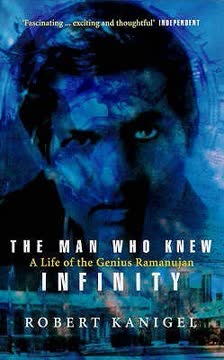
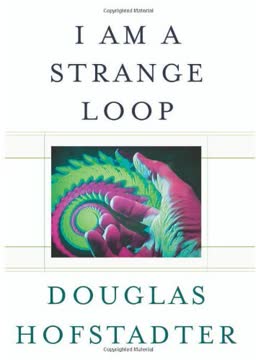
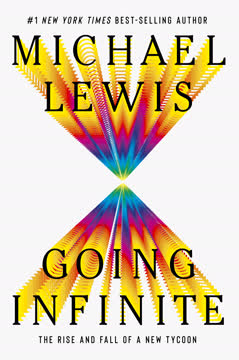

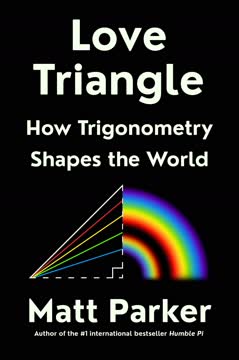


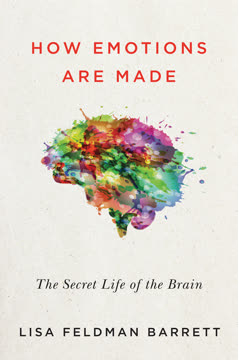

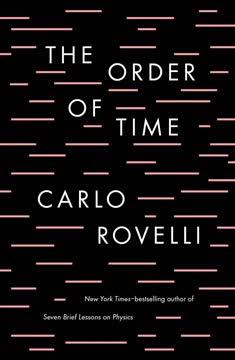
Download PDF
Download EPUB
.epub digital book format is ideal for reading ebooks on phones, tablets, and e-readers.












